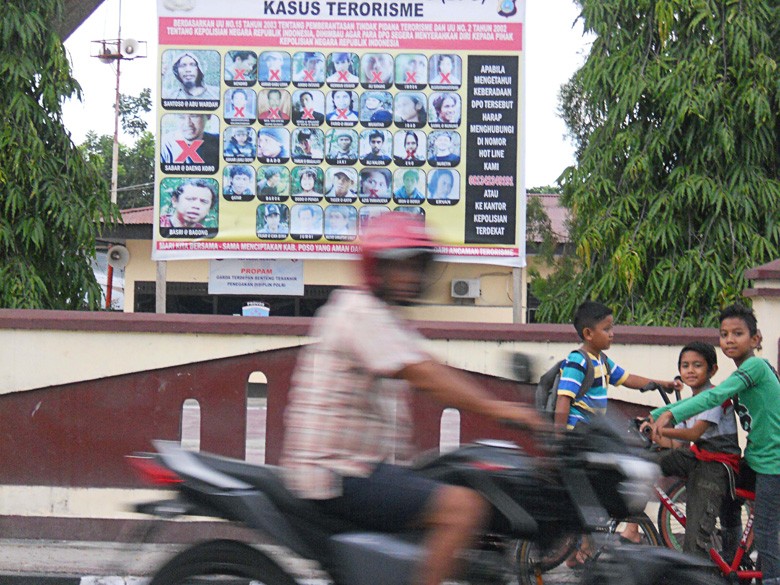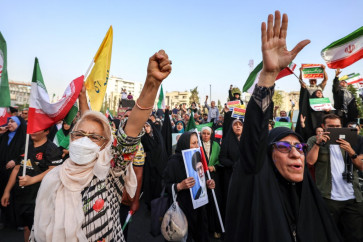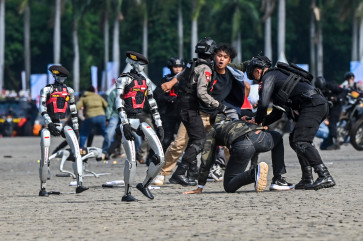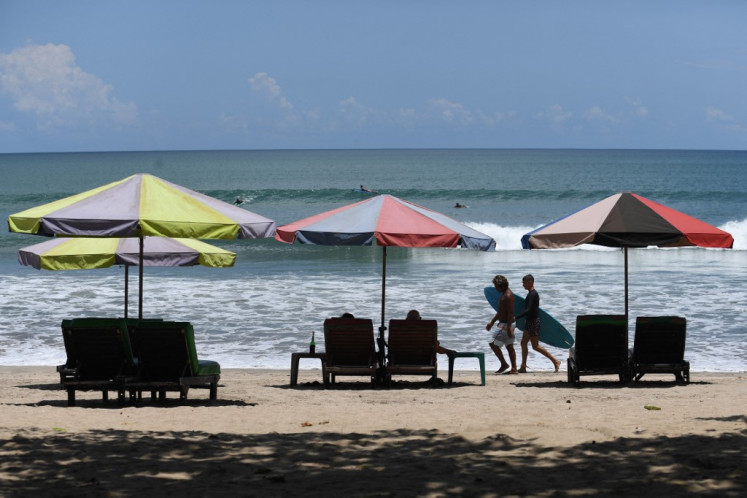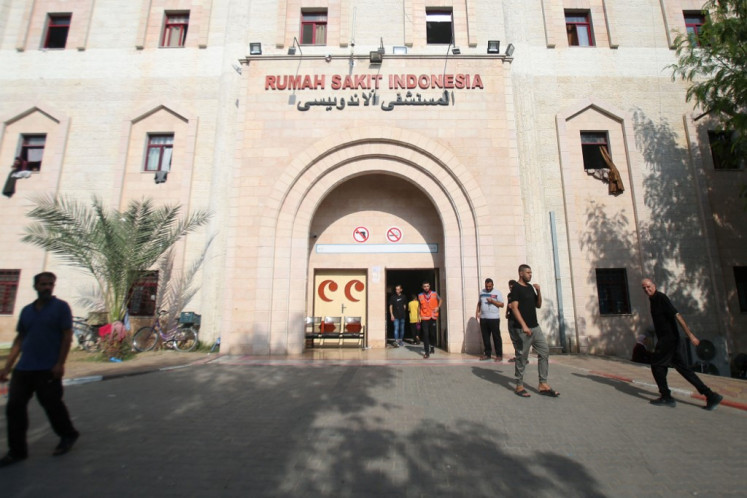Popular Reads
Top Results
Can't find what you're looking for?
View all search resultsPopular Reads
Top Results
Can't find what you're looking for?
View all search resultsSecuring public spaces in a time of terror
In a spatial perspective, the site of a terrorist attack determines the success of the deed. Of course, a site is usually selected to have the maximum impact in delivering the message of fear and threat.The psychological nuance of this message is not always related to the number of casualties but sometimes to the extent of public horror.The evolution in the choice of terrorism sites since 2000 can be observed through the characteristic of the latest wave of terrorism, according to Rapoport’s classification. The landscape of potential terror targets shifted from hard to soft targets and also in the selection of victims.
Change text size
Gift Premium Articles
to Anyone
T
errorist attacks around the globe early this year indicated a strong possibility of a streak of attacks in the future that need to be anticipated. Unfortunately, it appears that relying on intelligence information and aggressive military (or formal security organizational) approaches are not enough to prevent such attacks. I don’t mean to be pessimistic, but this the situation we face today. It is important to posit the issues of urban terror in the context of not only combating the sources but also of protecting possible targets.
In a spatial perspective, the site of a terrorist attack determines the success of the deed. Of course, a site is usually selected to have the maximum impact in delivering the message of fear and threat.
The psychological nuance of this message is not always related to the number of casualties but sometimes to the extent of public horror.
The evolution in the choice of terrorism sites since 2000 can be observed through the characteristic of the latest wave of terrorism, according to Rapoport’s classification. The landscape of potential terror targets shifted from hard to soft targets and also in the selection of victims.
Except for the case of Indonesia, terrorists single out a crowd randomly that is not always representative of the group of high-profile victims. However, the important point is that all of the incidences occurred in public spaces.
Public spaces are the most popular and potential targets due to the variety of activities that give advantages to terrorists. Terrorists can launch attacks that are effective in creating fear, have the potential to claim many victims and paralyze public activities. Thus, considering security issues when planning and designing public spaces is a must. However, efforts to bring about a sense of security in public spaces have their own challenges.
The open nature of public spaces in itself is a weakness. This open nature -despite being characterized as one of the best qualities of a public space - is a shortcoming as it results in a lack of ability to control the users. On the other hand, this drawback offers an advantage to terrorists to manage to blend into a crowd without being noticed and then conduct their act of terror. This condition constitutes significant clues in planning security features at potential target sites without marring the vibrancy of a public space.
In responding to this, we can learn from several Western countries where the issue of securing public spaces has been integrated into antiterrorism efforts.
For example, after the massive attacks of 9/11 in New York and 7/7 in London, the governments of the two countries established substantial policies in the context of planning and designing public spaces.
The United States is represented by the Federal Emergency Management Agency (FEMA), which produced a set of documents known as FEMA 426 and FEMA 430 that contain detailed guidance on how to plan and design public spaces to prevent acts of terror. Meanwhile, the United Kingdom, which in the past experienced a number of attacks at the hands of a local separatist group, has for a longer time implemented strategies to protect and secure public spaces. The current policy in line with the campaign of the war on terror, entitled CONTEST (Counter-Terrorism Strategy), has a specific section on creating safer public spaces.
Although the implementation of the strategies need to be evaluated in terms of effectiveness in protecting a target and also in the balancing of security and nature in the public realm, the role of a government in this situation remains clear. It states the standards and guidance in formulating secure public spaces.
A government can play an active role in protecting the people and building an environment in response to a terrorist attack. From this point, the planning and designing of spaces can be divided into several strategies. In the preventive aspects, strategies can be focused on efforts to prevent terrorist attacks by analyzing and zoning high-profile areas and providing security features embedded in public spaces.
Meanwhile, a responsive strategy can be used as an effort to rebuild an area after an act of terror through revitalization. The last strategy of mitigation can be directed at reducing vulnerability and the impact of a terrorist attack by establishing a set of regulations on resilience building and environment.
Of course, the execution of these strategies needs to take into account the balance between the security dimension, the value and the quality of space.
Securing public places is not an easy task, but it is necessary to protect society. We have experienced several attacks and stayed strong, but we also have a chance to live more securely without fear but with prepared protection. It is not a reflection of anxiety toward terrorism but thoughtful preparation of the appropriate protection of public spaces in a time of terror.
***
The writer is a researcher at the Jayakarta Reform Institute and associate researcher at the Indonesia Institute for Defense and Strategic Studies (LESPERSSI). She is also a doctoral candidate at the Department of Regional and Urban Planning-School of Architecture, Planning and Policy Development, the Bandung Institute of Technology (ITB).
---------------
We are looking for information, opinions, and in-depth analysis from experts or scholars in a variety of fields. We choose articles based on facts or opinions about general news, as well as quality analysis and commentary about Indonesia or international events. Send your piece to community@jakpost.com.

